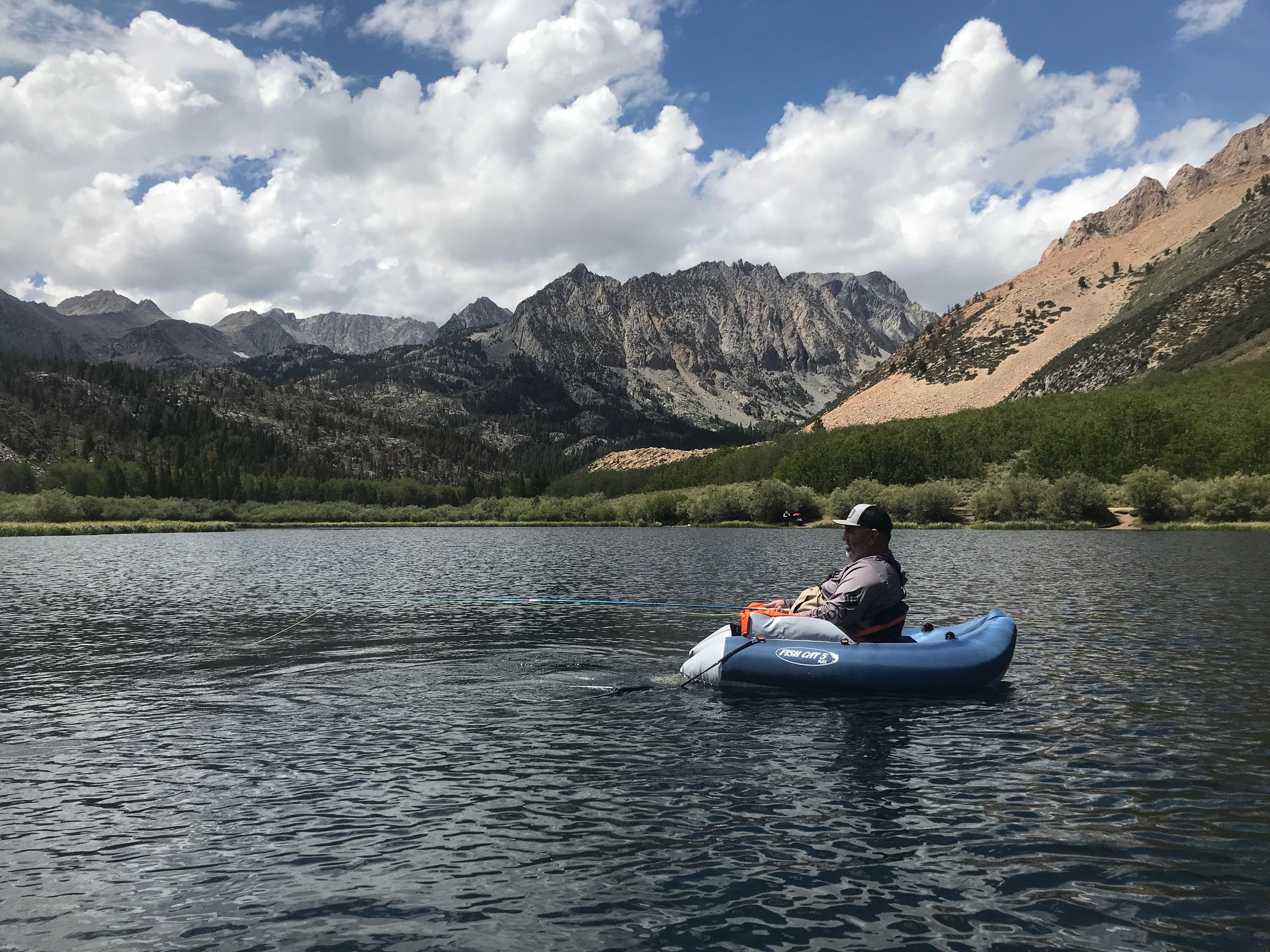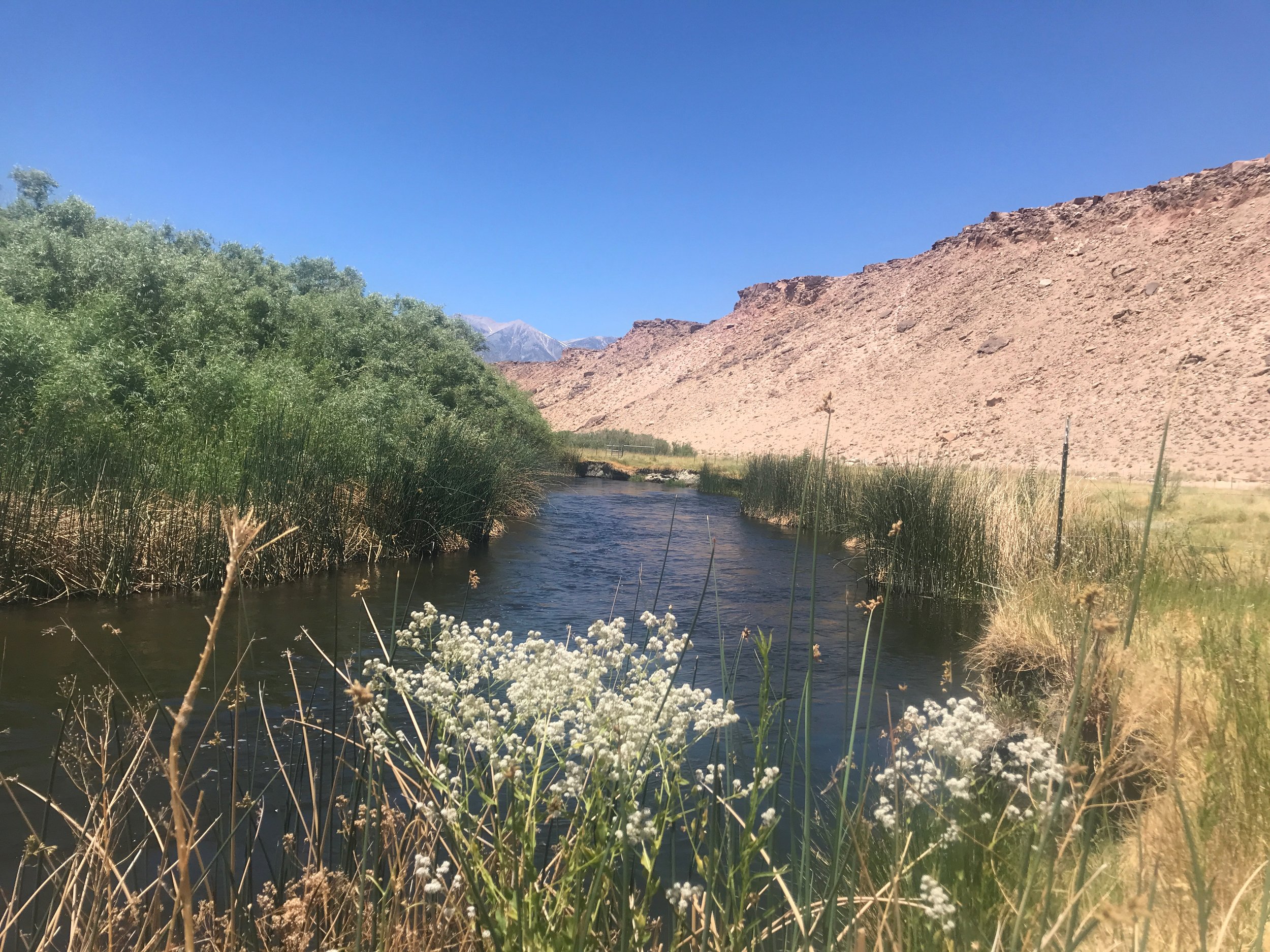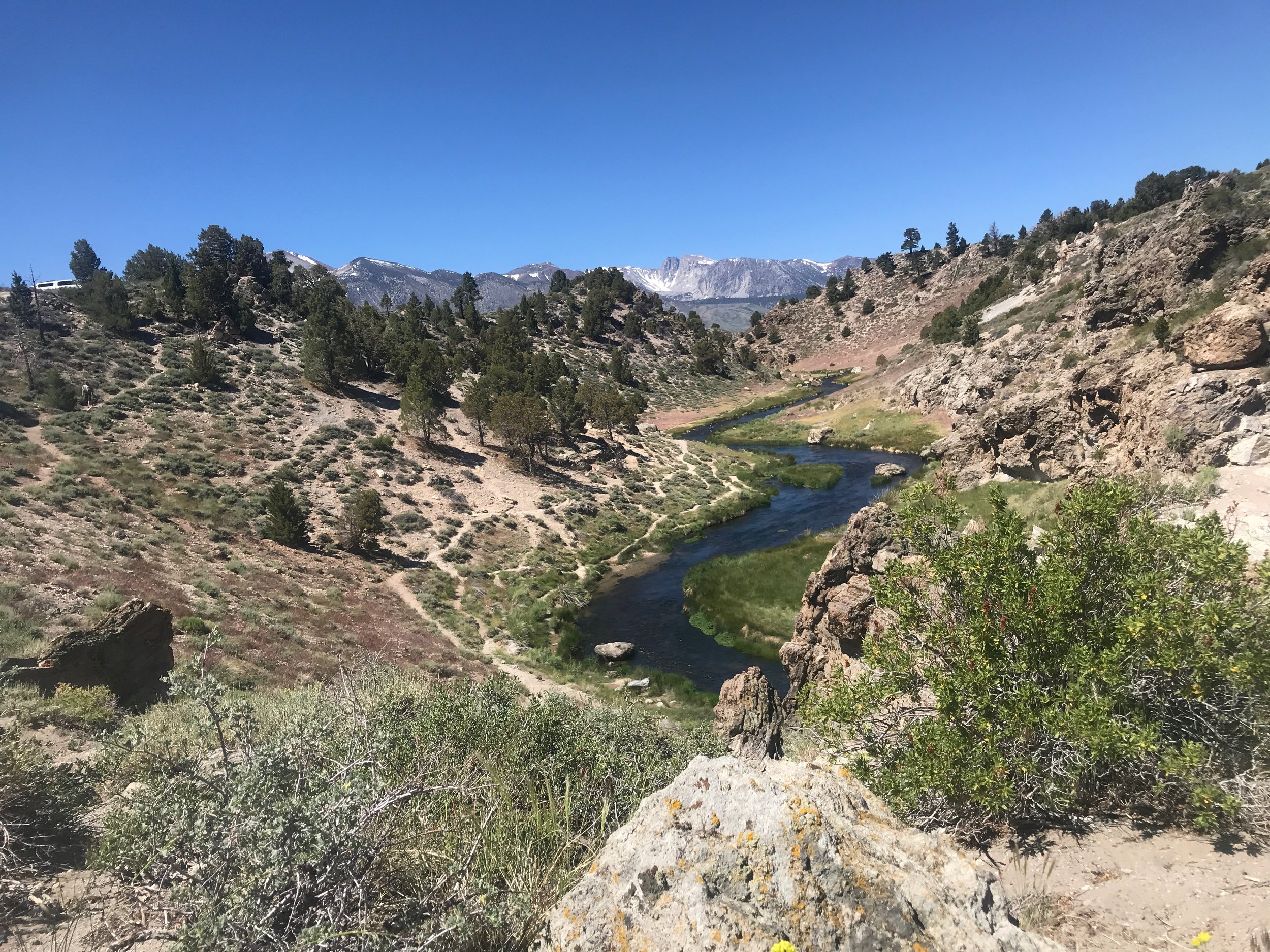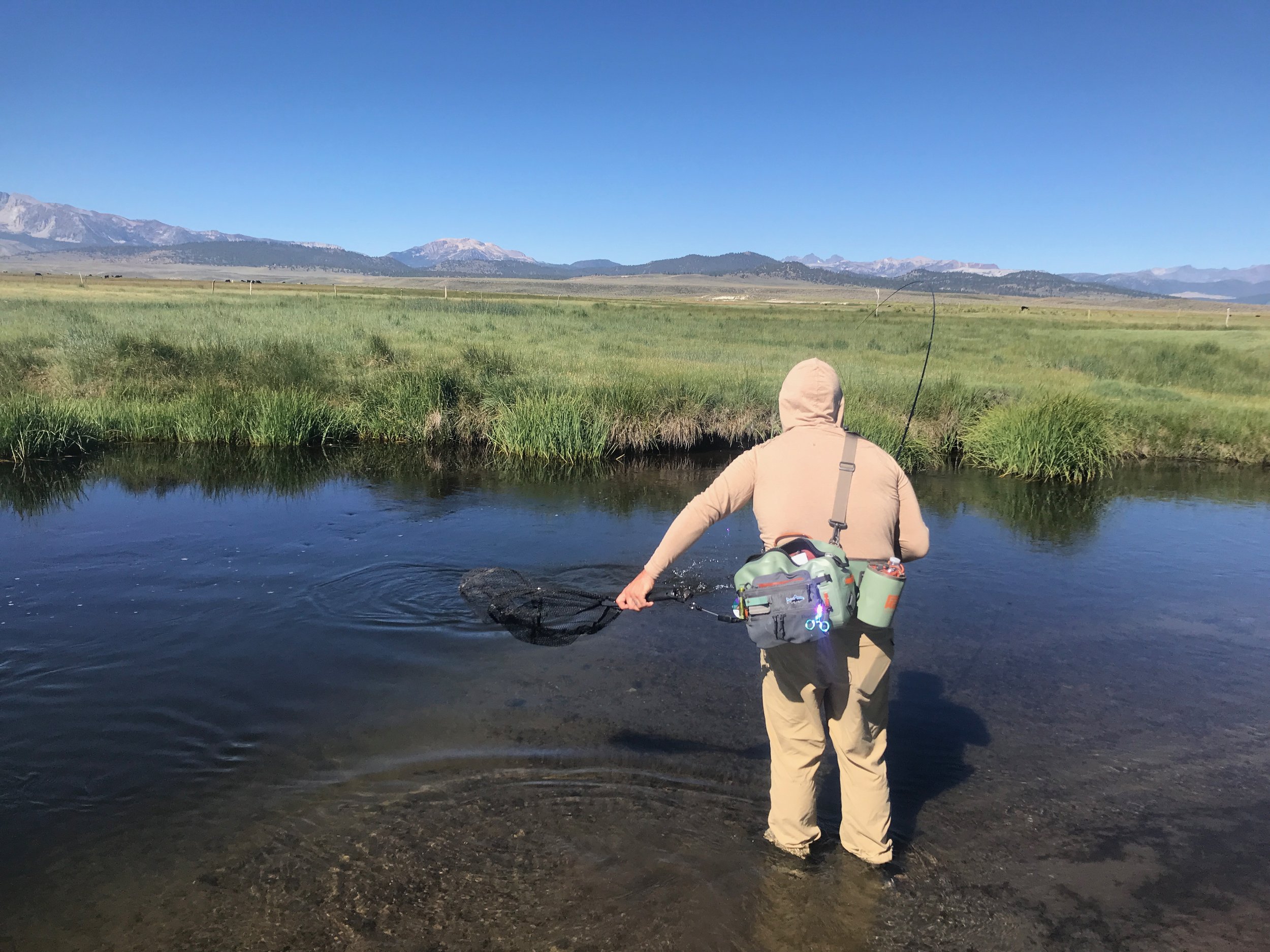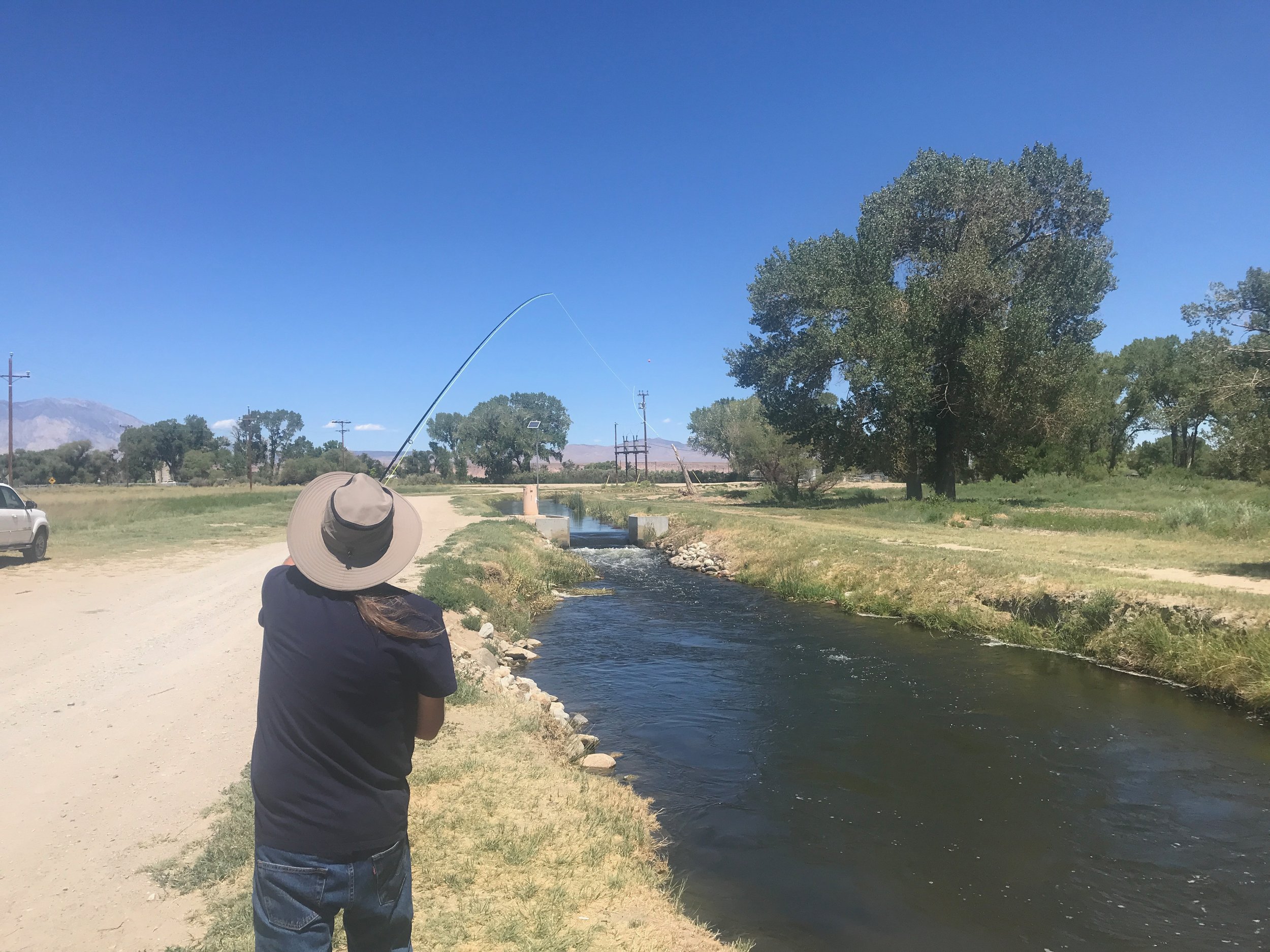Fly fishers, particularly at higher elevations, need to be on the water earlier in the day as afternoon thunderstorms are building up and raining on the Eastern Sierra from noon to evening. This added water is needed in these drought years. The rains wash terrestrial insects and drowns adult aquatic insects putting added food into the streams and lakes. I find the fishing to be better when we have these conditions. While most fly fishers head home, I don my rain jacket and head out to spend time on the water fly fishing. In the Owens Valley anglers should be aware of the waters temperatures as some trout waters are exceeding 70 degrees.
Fly fishers need to be on the water in the morning to avoid afternoon rain storms.
Freestone Streams:
Rock Creek:
Fly fishing the slow flat sections of the creek requires stealth in the approach and with the cast. I’m spooking more fish than I’m getting to cast to. The sections with some gradient, turbulent white water, are producing more fish as the trout in these sections do not spook as easy. Wild brown trout continue to take Adams parachutes and bead head gold ribbed hare’s ears nymphs.
Trout in the low clear sections of Rock Creek are very skittish and spook easily.
Bishop Creek
Middle Fork:
If you’re not prepared to be fly fishing in the rain, be sure to fish in Bishop Creek Canyon in the mornings. Wet wading up stream casting a dry and dropper rig continues to produce wild brown trout, brook trout, and stocker rainbows. I’m fishing with a size 16 Adams parachute and a size 16 gold ribbed hare’s ear. The key to success in fishing these freestone streams is the ability to accurately cast your files to the pockets that are holding trout. Look for the trout in pools and the pockets around rocks in the stream bed.
Roll casts and dabbling are required on creeks with heavy vegetation to present the fly to the pocket holding water above and below the rocks in the creek.
Lower Owens River:
Wild Trout Section:
Afternoon buildup of clouds is helping to cool off the lower Owens River. Starting around 11:00 A.M. fly fishers should be checking water temperatures every hour. Once it get to 70 degrees it’s time to head up the hill and fly fish a water in the mountains that’s in the 65 degree range or less. Fishing in the morning with nymphs is producing fish as the water level has come down to 150 CFS which opens up more water to wading fly fishers. I’m Euro nymphing this water with a gold ribbed hare’s ear, stoner nymph, and a Butano nymph.
Flows have dropped from 250 CFS to a very wadable 150 CFS.
Hot Creek:
Interpretive Site:
The trico hatch continues to offer lots of dry fly action in the mornings. I start fishing the hatch with a trico parachute pattern. Once the tricos begin to oviposit, lay their eggs, I switch to a trico spinner pattern. The trico hatch ends mid-morning and is followed by blue wing olives and caddis. These hatches have been sporadic and due not occur every day. When you see rises of trout where the trout are coming out of the water, this is trout feeding on caddis emergers. I’m using size 22 and 24 trico parachutes, female trico parachutes, trico spinners, size 20 gray partridge spent caddis, and size 20 blue wing olive parachutes.
Weed beds have made fishing the canyon section of Hot Creek tough for all but expert fly fishers.
Hot Creek:
Canyon Section:
This is the hardest time of the year to be fly fishing in the canyon. The weed beds make it tough to present the flies to the trout. The trout are there feeding on nymphs and dries. Getting a drag free drift will produce trout, but getting a drag free drift is darn near impossible. The key to success is to drift your flies in the narrow lanes between the weed beds or to fish in the few open holes on the creek. Fishing with size 20 blue wing olives and size 20 gray caddis patterns are producing a few fish for fly fishers who can cast accurately and get a drag free drift.
Euro nymphing during the morning trico hatch produces rainbows and brown trout on the upper Owens River.
Upper Owens River:
Above Benton Crossing Bridge:
I’m checking water temperatures starting mid-morning and they have been staying in the safe zone of under 65 degrees. Morning hatches of trico have the trout coming to the surface to feed on trico spinners. I’m fishing a dry and dry rig here so that I can see the small trico spinner as it floats on the creeks surface. I’m using a size 16 Adams parachute as my indicator fly. It allows me to know when a trout has taken my imitation when I can’t see the fly on the water. I also set the hook when I see any trout rises within three feet of my indicator fly. By noon the action is over on the river. There are a few trophy trout in the system taking nymphs off the substrate in the deeper holes, runs, and cutbanks. I’m Euro nymphing for the trophy trout with stoner nymphs and green/gold Prince nymphs in size 12.
Bishop Creek Canal is a great place for beginners to learn how to cast without worrying about getting tangled in stream side vegetation.
Bishop Creek Canal:
Behind the Ford Dealer:
This is another Owens Valley trout water that I’m monitoring water temperatures starting late in the morning. Once water temperatures get to or above 70 degrees, I quit practicing catch and release. Usually by noon I’m heading up the hill to go fish one of the freestone creeks that drain the eastern side of the Sierra. I’m Euro nymphing and indicator nymphing with gold ribbed hare’s ears, stoner nymphs, green/gold Prince nymphs, and pheasant tail nymphs.

